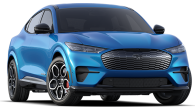Tracing its lineage back to the ashes of the second world war, the Land Rover Defender is, for many, the archetypal 4x4.
Few nameplates have such a rich uninterrupted history, let alone nearly 70 years of continuous production and when the final original ladder-frame versions rolled off the line in 2016, many considered it the end of an era.
Not Jaguar Land Rover, though. It had designs on Defender as an entire sub-brand, and launched a new-generation model in 2020.
To the dismay of some, while the iconic boxy silhouette returned, the new car migrated to a monocoque rather than a ladder frame chassis, having more in common with a contemporary Range Rover or Discovery than the brand’s great ancestor vehicle.
When the new one launched, it was entirely modernised, shaped and designed by European safety and emissions regulations. It came with new engines and high-tech off-road equipment, leaving behind the barebones approach of the original.
I’ve been wondering for a long time how the two really compare. Not just on paper, but on the trail. Are the naysayers right? Is the new Defender really so soft it can’t compete? And how well has the old Defender aged since?
Luckily, a good friend of mine maintains one of the last Defenders ever built, and with access to a new Defender 90 in near-equivalent spec, I tested them to find out.
How much does the Land Rover Defender 90 cost, and what’s in the box?
Our 2026 Land Rover Defender 90 is a current base grade, although it is kitted with several options, and it’s significantly more expensive than the version from 2016 cost when it was new.
Our as-tested vehicle (Defender D250 S) starts from $98,400 and that’s before you delve into the extensive options list (of which our car had more than $30,000 worth) or on-road costs.
Some of the boxes ticked, like the Off Road Pack (torque vectoring, domestic socket, roof rails - $1660), Capability Plus Pack (Terrain Response 2, all terrain progress control, and configurable terrain response - $1660), and the Air Suspension Pack (air suspension, adaptive dynamics, auto headlight levelling - $1310) were absolutely worth it. Others (22-inch gloss-black wheels - $690; matt protective film - $6840; black contrast roof - $2170; panoramic sunroof - $4490) I wouldn't bother with.
The finished product is pricey at $121,587 all said and done, but it looks and feels the part, with its imposing height, short overhangs and properly luxe fitments.
Meanwhile, the 2016 Defender 90 we’re pitting it against started from $42,800 before on-roads back when it was new. It also had a few options fitted to it, including an exterior black pack ($2800 - with 16-inch gloss-black wheels), a contrast roof ($730) with a sunroof ($590), bringing the total to an estimated $46,920, which is easily less than half the price of the new one.
While it has fewer creature comforts, Defenders of this vintage are so sought after they’re currently selling north of $70,000, making them a relatively recent appreciating classic.
Still, which one would you rather drive in the daily grind? While there’s a certain romance of the old 90, its interior is comparatively barebones, featuring basic albeit leather-finished seats, a single-din radio, single-zone manually adjusted air conditioning, and even some laugh-out-loud items in 2025 like reach-out-to-adjust rear vision mirrors, no steering column adjust and vinyl flooring.
Alarmingly, there’s also no airbag to be seen, and Monash University’s Used Car Safety Ratings awarded the 2016 Defender the lowest-possible one star.
Meanwhile, the 2025 Defender 90 is unrated by ANCAP, but its larger 110 sibling achieved a maximum five stars in 2020.
Engine and transmission
This is probably one of the areas where these two cars are the furthest apart. One uses the entire textbook of modern engine construction, and the other is (refreshingly?) obtuse.
The 2016 model we have is equipped with a Ford-sourced 2.2-litre single turbo-diesel engine producing just 90kW/360Nm, mated to a six-speed manual gearbox with a low-range transfer case. It features a manually operated centre differential lock.
.jpg)
Meanwhile the 2025 D250 S is equipped with a 3.0-litre inline six-cylinder twin-turbo diesel engine producing a comparatively stratospheric 183kW/570Nm. The manual is gone, with the new vehicle only offering an eight-speed torque converter automatic transmission with electronically activated low-range. In addition, the one we tested has both a centre and rear differential, which automatically lock based on the terrain conditions and selected drive mode.
The 2016 model features heavy duty coil sprung suspension all-round, although the one tested features upgraded Fox shocks to replace the worn-out originals. The 2025 version has adjustable height air suspension as-tested.
.jpg)
Off-road
They might only have a four-year-gap between them in terms of production design, but these two cars are a world apart on the rough stuff.
The original Defender is rugged in every sense. You can tell it traces its history back so far because of how involved it is to drive. It’s rewarding and challenging, but requires constant vigilance. It’s a vehicle so devoid of modern amenities there are real consequences for incorrect inputs.
For example, there’s no self-levelling suspension system, or clever vehicle stability systems, so you need to be aware of your surroundings and wheel placement at all times. There’s no computer-controlled torque vectoring to send power to the correct wheel, so you have to be aware of the level of traction each surface will offer, and exactly how much grip you’ll be able to put down.
.jpg)
Then there’s the need to carry momentum because of the short gearing. If you’re heading up the kind of near-30-degree climbs we used, you have to carefully plot your gear changes, otherwise you risk stalling or losing enough momentum that changing gears isn’t worth it at all.
However, this makes managing speed with engine braking when heading downhill much easier.
The worm-and-roller steering in the 2016 Defender requires a lot of action, although communicates the feel of the terrain in front very nicely.
In addition, the absolute visceral nature of the original Defender’s chassis makes it feel like an extension of your body crawling across the terrain. It is a very mechanical experience to feel the car flex over moguls, tilt into dips and scrabble over gravel, as you work the intense steering and continuously shuffle through gears.
In comparison, the modern D250 feels almost aloof in the way it attacks the terrain, with the now mainstream rack and pinion steering noticeably electronically assisted and the air suspension system filtering out the visceral element from the original. However, it’s not entirely removed from the road like some modern cars and still offers a decent amount of feel for what is going on at the front axle.
The electronic features are really what sets it apart though. They are so advanced, seamlessly integrated and well-calibrated, you can pretty much leave the car on automatic, point it vaguely where you want it to go, and it will figure out the rest.
.jpg)
In some way, this removes a lot of the challenge and reward which the original Defender offers. You get to the top or the bottom of the hill, and it feels like the car did all the work… Because, really, it did.
You could shut the book there, but the thing is, it’s just so impressive. The software lets you bring up an off-road screen on the centre multimedia panel, which gives you a live view of how extended or compressed your suspension is and exactly where the drive is going. What impressed me most is how locked the electronically controlled centre and rear differentials are.
Clutch packs in each diff start to wind on or wind off depending on how much torque needs to be applied to each axle. Head directly up a steep, gravelly incline, for example, and the car will automatically completely lock the rear, and as you start to apply steering to round a corner, it will gradually wind it off as the inside wheel needs to spin less.
There’s very little slippage or wheel locking intervention on the dry, lumpy, and steep inclines we challenged, with my primary concern the whole time only being the absurd 22-inch gloss black alloys applied to our test vehicle.
The ultimate result is interesting. Sure, the new car is less challenging to drive, and maybe a little too automated for some 4x4 enthusiasts, but they might be horrified by just how easily this new Defender simply sails over challenging terrain with no modifications and, frankly, ridiculous wheels.
Maybe the most important thing is how quick it is. I don’t mean on flat ground, more so that it is so confident on this kind of hilly, lumpy, and gravelly terrain, it was easily twice as fast if not even faster than the old Defender to get to the top. The camera system, visibility, ground clearance, automatic terrain systems and transmission made things so easy I rarely worried about putting a foot wrong.
.jpg)
In the old Defender there was simply so much more planning a route around your gear shifts, picking a line with optimal flex and traction, and straight up less torque or power availability on steeper sections, that much more caution was required.
It might not be as involved or rewarding in a purist sense then, but I’ll have nobody tell me the new car isn’t as capable.
Verdict
The original 2016 Defender 90 is packed with romantic, old-world charm. The joy and pain of doing everything yourself. A real artefact of an increasingly forgotten time.
It can do everything the new one can, but more slowly and with much more input from the driver, requiring genuine skill to drive.
The 2025 Land Rover Defender D250 S on the other hand embraces the new. Too clever for its own good, it asks you whether you need to feel everything when its heavily computerised and almost uncannily intelligent systems can do everything faster and smarter than the driver anyway.
This doesn’t make it any less capable. It may require less skill and is therefore less rewarding, but it is also incredibly impressive and comfortable no matter what you throw at it.
Ultimately though, one car is a toy for a hobbyist, the other one can do it all and be driven every day. I’ll let you decide which is the right way to go.






.jpg)

.jpg)
.jpg)
.jpg)
.jpg)
.jpg)
.jpg)
.jpg)
.jpg)
.jpg)
.jpg)
.jpg)
.jpg)
.jpg)
.jpg)
.jpg)
.jpg)
.jpg)
.jpg)
.jpg)
.jpg)
.jpg)
.jpg)
.jpg)
.jpg)
.jpg)
.jpg)
.jpg)
.jpg)
.jpg)
.jpg)
.jpg)
.jpg)
.jpg)
.jpg)
.jpg)
.jpg)
.jpg)
.jpg)
.jpg)
.jpg)
.jpg)
.jpg)
.jpg)
.jpg)
.jpg)
.jpg)
.jpg)
.jpg)
.jpg)
.jpg)
.jpg)
.jpg)
.jpg)
.jpg)
.jpg)
.jpg)
.jpg)
.jpg)
.jpg)
.jpg)
.jpg)
.jpg)
.jpg)
.jpg)
.jpg)
.jpg)
.jpg)
.jpg)
.jpg)
.jpg)

.jpg)
.jpg)








